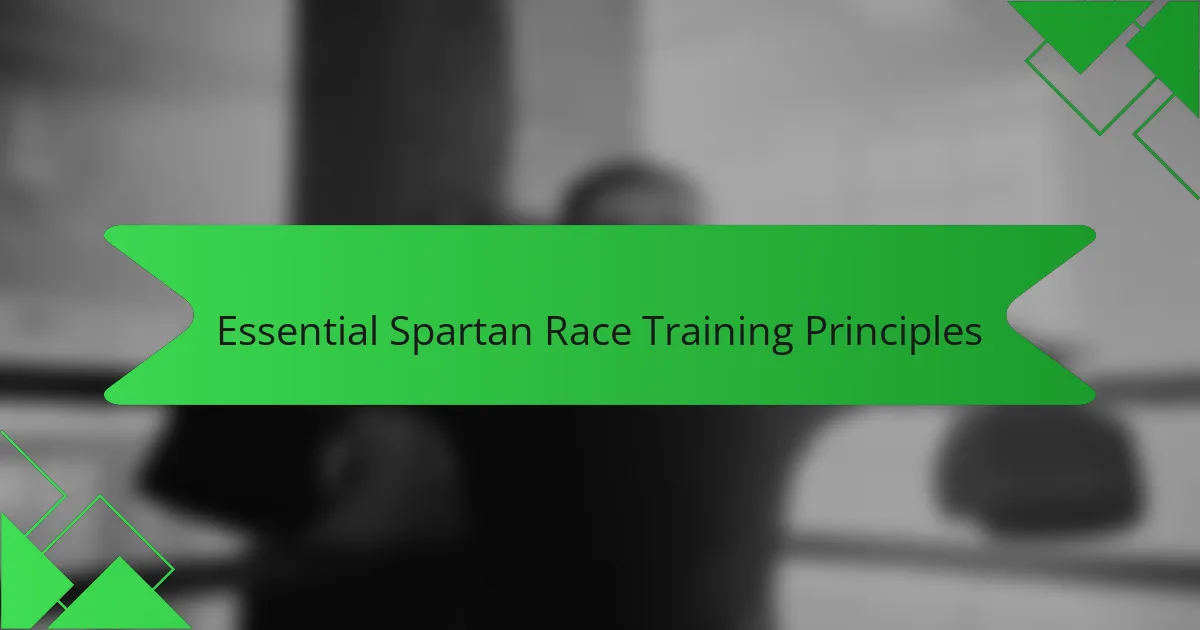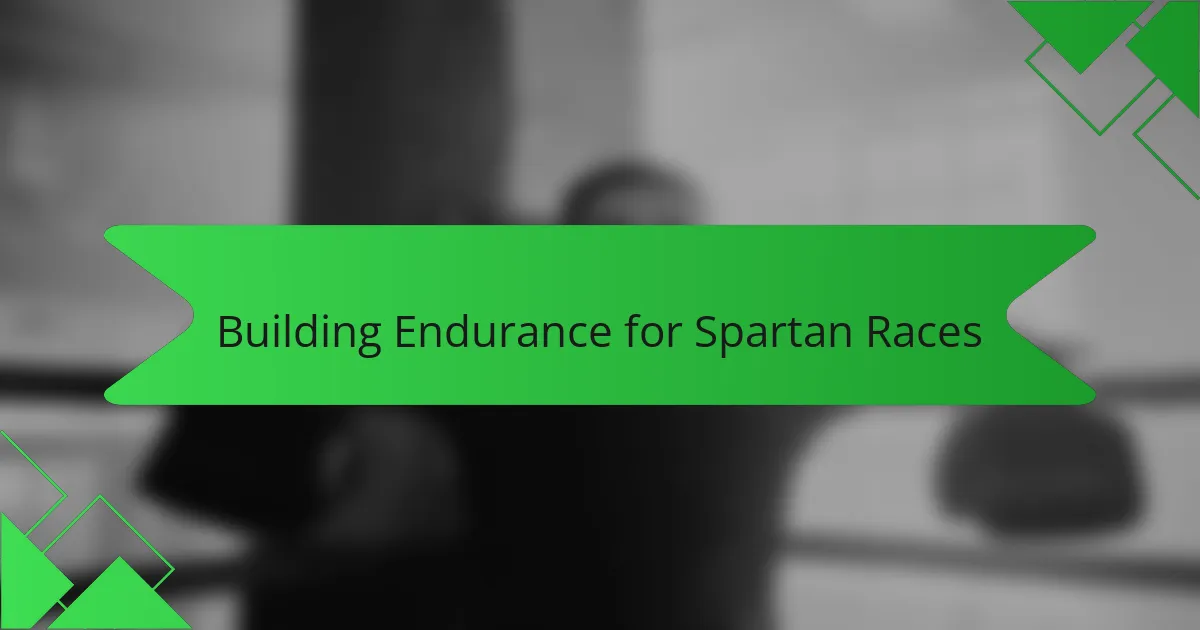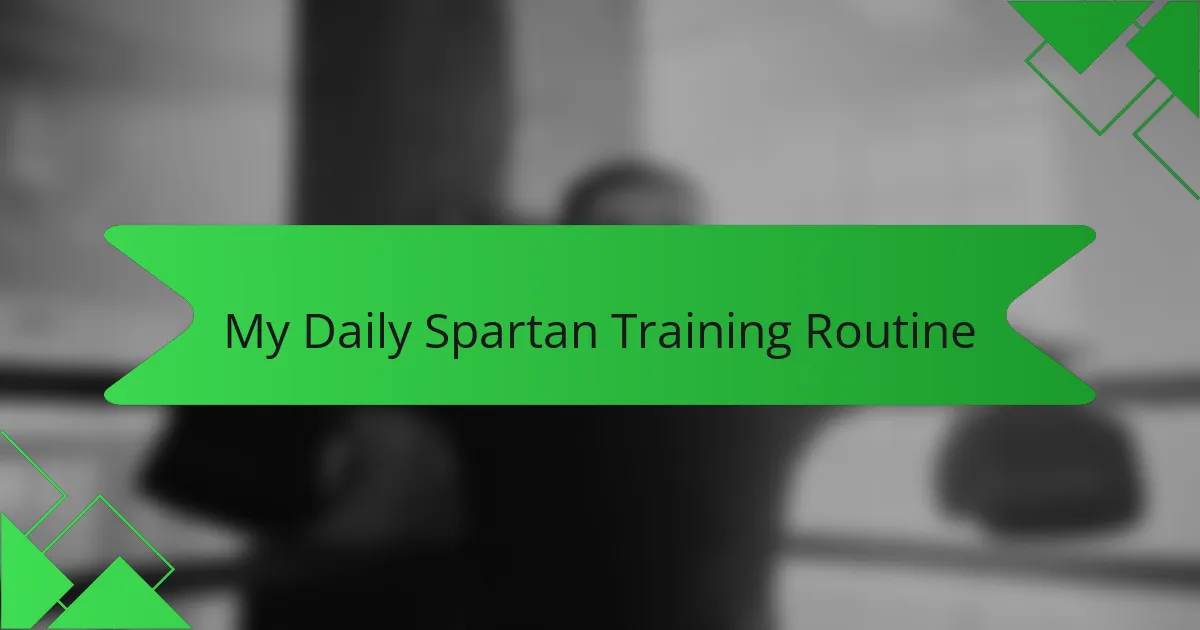Key takeaways
- Obstacle Course Racing (OCR) combines running with physical challenges, requiring both endurance and mental toughness.
- Strength, endurance, and mental resilience are crucial for success in Spartan Races, with a focus on functional strength and overcoming fatigue.
- Building endurance includes varied workouts, such as interval training and cross-training, to prevent burnout and enhance stamina.
- Pacing, grip strength, and training functional movements are essential strategies to improve performance and finish strong in races.

What Is Obstacle Course Racing
Obstacle Course Racing (OCR) is a sport that combines running with a variety of physical challenges, like climbing walls, crawling under wires, and carrying heavy objects. From my experience, it’s not just about speed but also strategy and grit to overcome each diverse obstacle. What makes OCR exciting for me is the mix of endurance and mental toughness it demands at every step.
| Feature | What It Means |
|---|---|
| Distance | Varies from 3 to 12+ miles, depending on race type |
| Obstacles | Includes climbing, jumping, crawling, carrying heavy loads |
| Physical Demands | Strength, endurance, agility, and coordination needed |
| Mental Challenge | Requires focus, determination, and problem-solving |
| Community | Often includes a supportive and motivating group atmosphere |

Essential Spartan Race Training Principles
Essential Spartan Race Training Principles require a balance between strength, endurance, and mental toughness. From my experience, it’s not just about how fast or strong you are but how well you push yourself through fatigue and unexpected challenges. I found that embracing discomfort during training prepared me best for the unpredictable nature of the race itself.
| Training Focus | Why It Matters |
|---|---|
| Strength | Obstacle success relies heavily on upper body and core power. I noticed my grip strength improving was a game-changer for monkey bars and rope climbs. |
| Endurance | Spartan Races are long and grueling, so cardiovascular fitness keeps your pace steady. Building endurance helped me avoid hitting the dreaded wall early on. |
| Mental Toughness | When your body screams to stop, your mind has to push through. I remember consciously telling myself to keep moving despite exhaustion, which made all the difference. |

Building Endurance for Spartan Races
Endurance is the backbone of any Spartan Race, and building it takes more than just running long distances. When I started incorporating mixed cardio workouts—like alternating between running, rowing, and cycling—I noticed a significant boost in my stamina. It wasn’t easy at first, especially when my legs felt like lead, but pushing through those moments gave me a real sense of accomplishment.
One strategy that worked wonders for me was breaking down endurance training into manageable chunks. Focusing on shorter, intense bursts of activity followed by active recovery helped prevent burnout. Here’s what I found most effective:
- Incorporate interval training with varied intensity levels
- Mix running with swimming or biking to engage different muscles
- Gradually increase distance and duration week by week
- Use hill sprints or stair climbs to simulate race conditions
- Prioritize consistent, moderate-paced runs to build a solid aerobic base
These practices didn’t just improve my endurance; they made me mentally tougher too, ready to face whatever obstacles Spartan Race threw my way.

Strength Training for Obstacles
Strength training was a game-changer for my Spartan Race preparation. I focused on building functional strength, especially upper body and grip strength, since obstacles like monkey bars and rope climbs demand more than just brute force. I remember struggling early on with the rig, but consistent pull-ups and farmer’s carries made a huge difference.
| Exercise | Benefit |
|---|---|
| Pull-ups | Improve upper body and grip strength for hanging obstacles |
| Farmer’s Carries | Enhance grip endurance and core stability |
| Deadlifts | Build overall strength and power for climbing and lifting |
| Push-ups | Increase pushing power for walls and barriers |
| Planks | Strengthen core to maintain stability during various obstacles |

Developing Mental Toughness
Developing mental toughness was, without a doubt, one of the hardest parts of my Spartan Race training. There were moments when my body wanted to quit, but I learned to silence that voice and push through, reminding myself that resilience wins races. I found that breaking down the obstacles mentally before tackling them physically made a massive difference in my confidence and stamina.
| Mindset Challenge | Mental Toughness Strategy |
|---|---|
| Fear of Failure | Reframing failure as a learning experience helped me stay motivated. |
| Physical Fatigue | Using positive self-talk to overcome the urge to quit became crucial. |
| Uncertainty of Course | Mental visualization of each obstacle reduced anxiety and boosted preparedness. |

My Daily Spartan Training Routine
My daily Spartan training routine became a balancing act of pushing limits and respecting recovery. Some mornings started with an early run to build endurance, while others focused on strength circuits—pull-ups, farmer’s carries, and core exercises that mimicked race obstacles. I often asked myself, “Can I squeeze in just one more rep?” and surprisingly, that extra effort made a noticeable difference over time.
What really kept me grounded during these workouts was breaking the routine into manageable chunks. Instead of attempting an exhausting two-hour session, I’d split training into focused blocks—strength in the morning, cardio in the evening. This approach helped me avoid burnout and stay consistent, which I believe is key to progress in Spartan training.
I noticed mental toughness naturally grew alongside physical gains. When faced with the urge to quit mid-workout, I’d remind myself, “If I can conquer this training grind, race day obstacles won’t stand a chance.” That mindset shift transformed daily challenges from grueling tasks into opportunities for growth—and that, for me, was the true essence of Spartan training.

Tips from My Spartan Race Experience
Tips from My Spartan Race Experience
One vital tip I learned is to pace yourself early on. During my first Spartan Race, I went all out at the beginning and was completely drained by the time I hit the tougher obstacles. Trust me, conserving your energy makes a huge difference in finishing strong.
Another insight is to practice grip strength regularly. The monkey bars and rope climbs will challenge you if your hands aren’t ready. I started adding pull-ups and farmer’s carries into my routine, which really paid off during the race.
| Tip | Why It Matters |
|---|---|
| Pace Yourself | Prevents early burnout and helps maintain energy through the whole race |
| Improve Grip Strength | Essential for overcoming obstacles like monkey bars and rope climbs |
| Train Functional Movements | Mimics race obstacles, improving performance and confidence |
